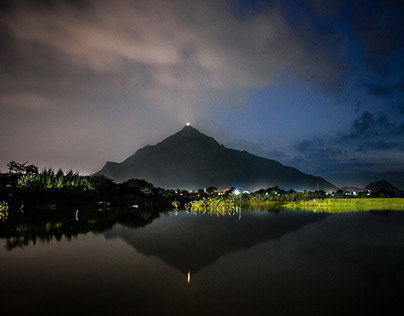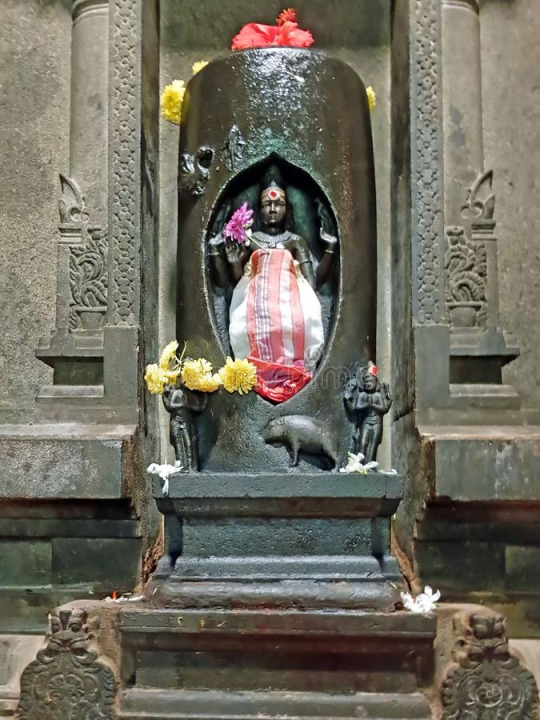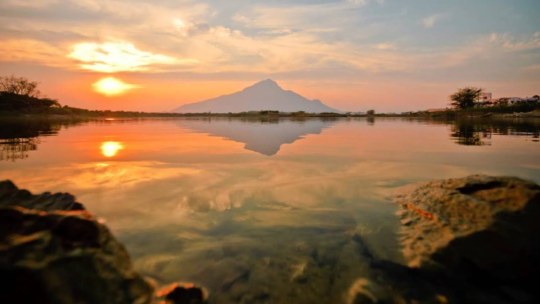#akhanda jyoti
Explore tagged Tumblr posts
Text
Seven Hills of Tirumala
This arduous journey involves traversing the entire range of the Seven Hills of Tirumala before seeking the divine blessings of Lord Sri Venkateswara.This eternal flame has become a popular destination for pilgrims who, after their grueling ascent of the Seven Hills, pay their respects.A Pilgrimage of FaithAkhanda Jyoti, the eternal flame, symbolizes the unwavering faith and devotion of pilgrims who embark on a journey to seek blessings from the divine. In conclusion, the pada yatra, with its roots in unwavering devotion and profound legends, remains an integral part of the pilgrimage to the Tirumala Tirupathi Temple.Walking through the Seven Hills, honoring the steadfast Bala Hanuman, and witnessing the eternal flame of Akhanda Jyoti all contribute to an experience of deep faith and spiritual fulfillment.
0 notes
Photo

Photo by DEV GOGOI
ARUNACHALA HILL
Each of the spiritual centers of India has its own character and line of tradition. Among them all it is Tiruvannamalai - Arunachala, that represents the most direct, the most formless and the least ritualistic of paths, the path of Self-enquiry, whose gateway is silent initiation. This is expressed in the old Tamil saying: “To see Chidambaram, to be born at Tiruvarur, to die at Banaras or even to think of Arunachala is to be assured of Liberation.” “Even to think of” because in the case of the direct path physical contact is not necessary. Hence, it was no accident that the Maharshi made Tiruvannamalai and its sacred Arunachala Mountain his home.
The Maharshi called Arunachala the spiritual Heart of the world. Aruna, which means ‘red, bright like fire’, does not signify the mere fire that gives off heat. Rather, it means Jnanagni, the Fire of Wisdom, which is neither hot nor cold. Achala signifies hill. Thus, Arunachala means ‘Hill of Wisdom’.
Tiruvannamalai, situated at the foot of Arunachala, is a town of medium size, 120 miles southwest of Chennai, an ancient village with a large and splendid temple. Certain yearly festivals draw large crowds of pilgrims to Tiruvannamalai from all over South India. This is especially so during Karthigai (also known as Deepam), which usually falls in November. On this occasion a beacon light of clarified butter (ghee) is lit at nightfall on the summit of the mountain. At Sri Ramanasramam, the greatest festivals are the anniversaries of the birth and passing of the Maharshi (Jayanti and Aradhana), which fall respectively at the winter solstice and the spring equinox.

Lingodbhava Murthy Shiva at the Matrubhuteswara Temple in Sri Ramanasramam
There is a Puranic story about the origin of the hill. Once Vishnu and Brahma fell to disputing which of them was the greater. Their quarrel brought chaos on earth, so the Devas approached Siva and besought him to settle the dispute. Siva thereupon manifested himself as a column of light from which a voice issued declaring that whoever could find its upper or lower end was the greater. Vishnu took the form of a boar and burrowed down into the earth to find the base, while Brahma took the form of a swan and soared upwards to seek its summit. Vishnu failed to reach the base of the column but “beginning to see within himself the Supreme Light which dwells in the hearts of all, he became lost in meditation, oblivious to the physical body and even unaware of himself, the one who sought”. Brahma saw a Thazhampoo flower falling through the air and, thinking to win by deception, returned with it and declared he had plucked it from the summit.
Vishnu admitted his failure and turned to the Lord in praise and prayer: “You are Self-knowledge. You are OM. You are the beginning and the middle and the end of everything. You are everything and illuminate everything.” He was pronounced great while Brahma was exposed and confessed his fault.
In this legend, Vishnu represents the intellect and Brahma the ego, while Siva is Atma, the spirit.
The story continues that, because the lingam or column of light was too dazzling to behold, Siva manifested himself instead as the Arunachala hill, declaring: “As the moon derives its light from the sun, so other holy places shall derive their sanctity from Arunachala. This is the only place where I have taken this form for the benefit of those who wish to worship me and obtain illumination. Arunachala is OM itself. I will appear on the summit of this hill every year at Kartigai in the form of a peace-giving beacon.” This refers not only to the sanctity of Arunachala itself but also to the pre-eminence of the doctrine of Advaita and the path of Self-enquiry of which Arunachala is the center. One can understand this meaning in Sri Bhagavan’s saying, “In the end everyone must come to Arunachala.”
Om Namo Bhagavate Sri Ramanaya
Sri Ramanasramam

Photo by DEV GOGOI
#Bhagavan Sri Ramana Maharshi#Arunachala#Dev Gogoi#holy mountain#Hill of Wisdom#pillar of light#Arunachala Linga#lingam#The Holy Beacon#karthigai deepam#akhanda jyoti#uninterrupted light#jyoty#jyothi#Aruna of the Golden Fire#dispute of Brahma and Vishnu#Sri Arunachala Tattuvam#The Significance of Seeing The Light
22 notes
·
View notes
Photo

Buy akhand jyoti diya brass lamp this navratri for online from India to worldwide at affordable rates.
The Akhanda Deepak (lamp) has its own special place in Sanatan Vaidik Hindu Dharma. It is a form and a symbol of Tej (Absolute fire principle). The lamp is invoked as meaning the lamp leads us from darkness towards light.
INR: 1,800.00 | USD: 30.00

0 notes
Photo

Fotografia de Bernd Kalidas Flory - Feliz Karthigai Deepam 🕉️🔥🕉️
ARUNACHALA HILL
Cada um dos centros espirituais da Índia tem o seu próprio caráter e linha de tradição. Entre todos eles está Tiruvannamalai - Arunachala, que representa o mais direto, o mais sem forma e o menos ritualístico dos caminhos, o caminho da Autoinquirição, cujo portal é a iniciação silenciosa. Isso é expresso no antigo ditado Tâmil: “Ver Chidambaram, nascer em Tiruvarur, morrer em Banaras ou mesmo pensar em Arunachala é ter certeza da Libertação”. “Mesmo pensar” porque no caso do caminho direto não é necessário o contato físico. Portanto, não foi por acaso que o Maharshi fez de Tiruvannamalai e sua sagrada Montanha Arunachala o seu lar.
O Maharshi chamou Arunachala de o Coração espiritual do mundo. Aruna, que significa 'vermelho, brilhante como o fogo', não significa o mero fogo que emite calor. Em vez disso, significa Jnanagni, o Fogo da Sabedoria, que não é quente nem frio. Achala significa colina. Assim, Arunachala significa "Colina da Sabedoria".
Tiruvannamalai, situada no sopé de Arunachala, é uma cidade de tamanho médio, 120 milhas (193 Km) a sudoeste de Chennai, uma antiga povoação com um grande e esplêndido templo. Certos festivais anuais atraem grandes multidões de peregrinos de todo o Sul da Índia a Tiruvannamalai. Isso é especialmente verdade durante Karthigai (também conhecido como Deepam), que geralmente cai em Novembro. Nesta ocasião, um farol de fogo de manteiga clarificada (ghee) é aceso ao anoitecer no topo da montanha. No Sri Ramanasramam, os maiores festivais são os aniversários do nascimento e morte do Maharshi (Jayanti e Aradhana), que caem respetivamente no solstício de inverno e no equinócio da primavera.

Existe uma história dos Puranas sobre a origem da colina. Uma vez Vishnu e Brahma caíram numa disputa sobre qual deles era o maior. A discussão deles trouxe o caos à terra, então os Devas aproximaram-se de Shiva e imploraram-lhe que resolvesse a disputa. Shiva então manifestou-se como uma coluna de luz da qual uma voz saiu declarando que quem quer que pudesse encontrar a sua extremidade superior ou inferior era o maior. Vishnu assumiu a forma de um javali e cavou fundo na terra para encontrar a base, enquanto Brahma assumiu a forma de um cisne e voou para cima em busca do seu cume. Vishnu falhou em alcançar a base da coluna, mas “começando a ver dentro de si a Luz Suprema que mora nos corações de todos, ficou perdido em meditação, alheio ao corpo físico e até mesmo inconsciente de si mesmo, aquele que buscava”. Brahma viu uma flor Thazhampoo a cair no ar e, pensando em vencer mesmo faltando à verdade, regressou com ela e declarou que a havia arrancado do topo.
Vishnu admitiu o seu fracasso e voltou-se para o Senhor em louvor e oração: “Vós sois o Autoconhecimento. Vós sois OM. Vós o começo, o meio e o fim de tudo. Vós sois tudo e iluminais tudo.” Foi declarado que ele era grande enquanto Brahma foi exposto e confessou a sua culpa.
Nesta lenda, Vishnu representa o intelecto e Brahma o ego, enquanto Shiva é Atma, o espírito.
A história conta ainda que, porque o lingam ou coluna de luz era tão deslumbrante que não podia ser contemplada, Shiva se manifestou como a colina de Arunachala, declarando: “Assim como a lua obtém a sua luz do sol, assim também outros lugares sagrados obterão a sua santidade de Arunachala. Este é o único lugar onde tomei esta forma para o benefício daqueles que desejam me adorar e obter iluminação. Arunachala é o próprio OM. Eu irei aparecer no topo desta colina todos os anos em Kartigai na forma de um farol que concede paz.” Isso se refere não apenas à santidade de Arunachala em si, mas também à preeminência da filosofia de Advaita e ao caminho da Auto-Inquirição de que Arunachala é o centro. Pode-se entender esse significado nas palavras de Sri Bhagavan: "No final, todos devem vir a Arunachala."
Om Namo Bhagavate Sri Ramanaya
Sri Ramanasramam

Fotografia de Bernd Kalidas Flory
#Bhagavan Sri Ramana Maharshi#Arunachala#Bernd Kalidas Flory#karthigai deepam#Arunachala Linga#lingam#akhanda jyoti#farol#luz#deepam#luz ininterrupta#jyoty#jyothi#Sri Arunachala Tattuvam#O significado da Montanha Arunachala#Brahma e Vishnu#disputa de brahma e vishnu
5 notes
·
View notes